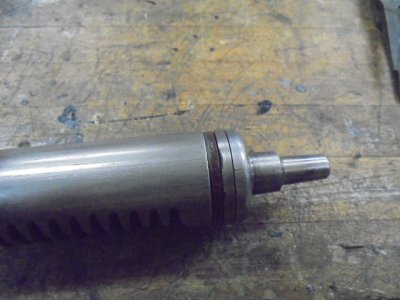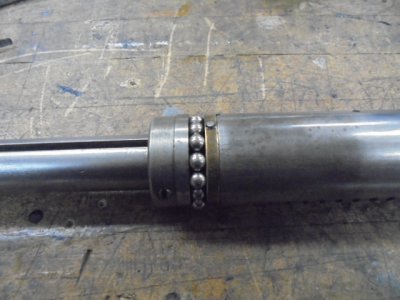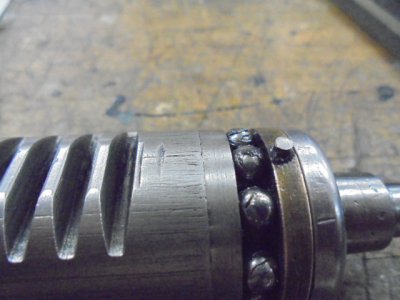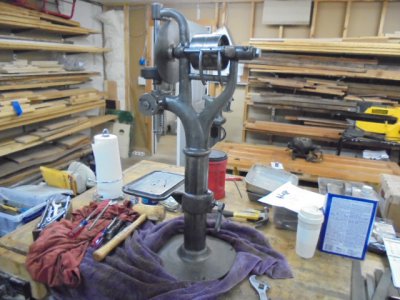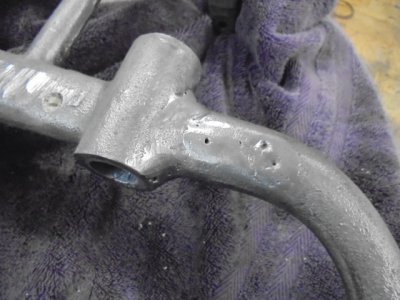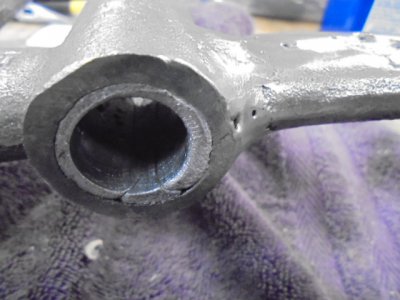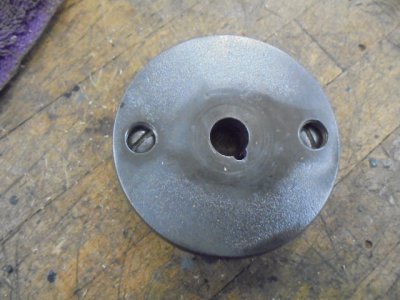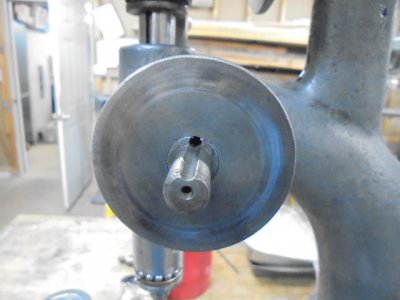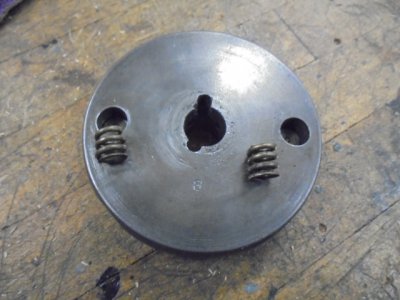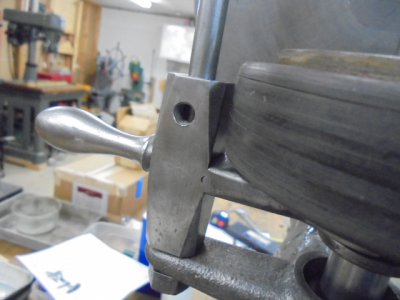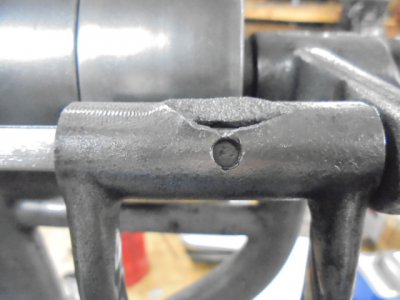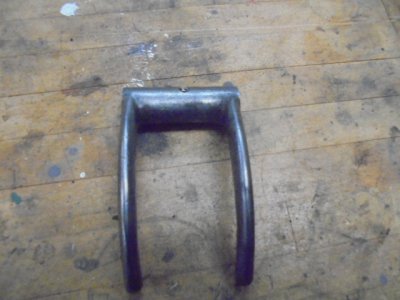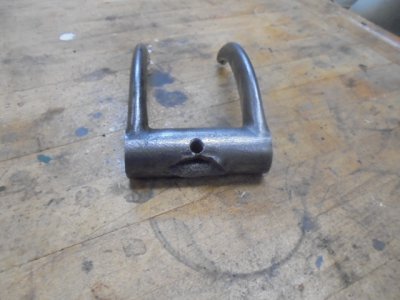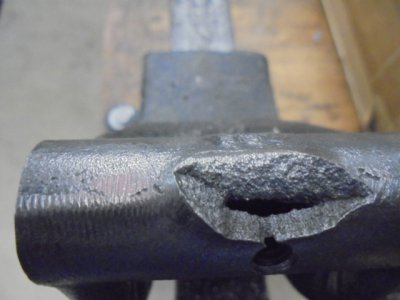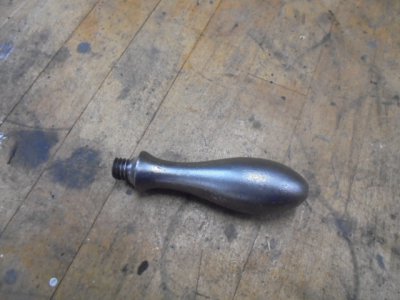So nothing? Here"s a link to a guy who rebuilt a spindle on a similar but different drill press https://forum.canadianwoodworking.c...4446-small-drill-press-rebuild-leland-gifford
I'm a bit confused b my machine - in the linked article the guy mentions "pressing on the lower race" - and this is typical of more modern drill presses I have worked on (standard roller bearings) - bearings press on spindle and are housed inside the quill. In the case of this machine none of the bearing pieces press on - they are all slip fitting on the spindle.
Maybe its my lack of understanding regarding thrust bearings and thrust washers versus roller bearings? My proposed assembly above is just a guess. In operation the spindle is revolving inside the quill and the quill is stationary. Both upper and lower bearing surfaces (thrust washer and thrust bearing) and the quill are held together with the top threaded adjusting cap. As the spindle rotates the bearing surfaces would tend to rotate with it and the quill must be stationary. I initially I thought the softer bearing pieces (phenolic washer and brass race) should ride against the quill to prevent wear on the quill but I'm not sure that is right.
Second question - seems like sizing the loose balls would be based on them fitting in the machined race. In the linked article the two races don't come together - is that typical? my only experience with loose ball bearings was on a table rack mechanism on a, I think, Delta drill press and they were completely enclosed by the races.
I know there are quite a few folks who understand thrust bearings, spindles, etc that can offer suggestions - please feel free to educate me
Rick - who expects and will gladly accept "your nuts" comments
I'm a bit confused b my machine - in the linked article the guy mentions "pressing on the lower race" - and this is typical of more modern drill presses I have worked on (standard roller bearings) - bearings press on spindle and are housed inside the quill. In the case of this machine none of the bearing pieces press on - they are all slip fitting on the spindle.
Maybe its my lack of understanding regarding thrust bearings and thrust washers versus roller bearings? My proposed assembly above is just a guess. In operation the spindle is revolving inside the quill and the quill is stationary. Both upper and lower bearing surfaces (thrust washer and thrust bearing) and the quill are held together with the top threaded adjusting cap. As the spindle rotates the bearing surfaces would tend to rotate with it and the quill must be stationary. I initially I thought the softer bearing pieces (phenolic washer and brass race) should ride against the quill to prevent wear on the quill but I'm not sure that is right.
Second question - seems like sizing the loose balls would be based on them fitting in the machined race. In the linked article the two races don't come together - is that typical? my only experience with loose ball bearings was on a table rack mechanism on a, I think, Delta drill press and they were completely enclosed by the races.
I know there are quite a few folks who understand thrust bearings, spindles, etc that can offer suggestions - please feel free to educate me
Rick - who expects and will gladly accept "your nuts" comments

